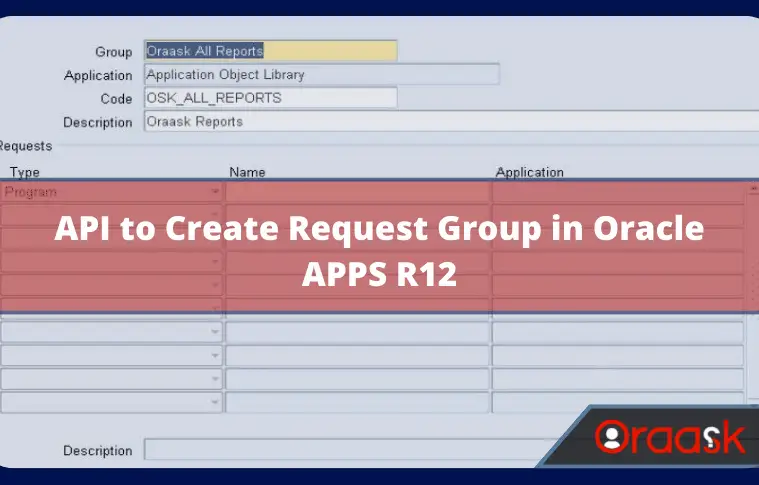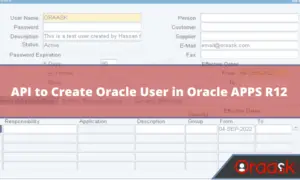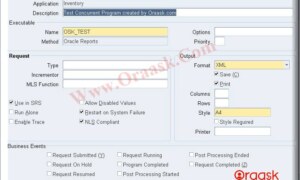Introduction
When we work with request group which a part of any responsibility, we often need to create a new custom request group to hold our requests. We can create a new request group from the front end through the application. However, in case we have numerous requests to create, it’s recommended to check whether Oracle provides an API to do the same job from the backend or not.
[adinserter block=”1″]
This article will give an API code example to create a request group from the backend.
Goal
Create a request group using API in Oracle APPS.
Standard API name: “FND_PROGRAM.REQUEST_GROUP“.
Forms Or Pages
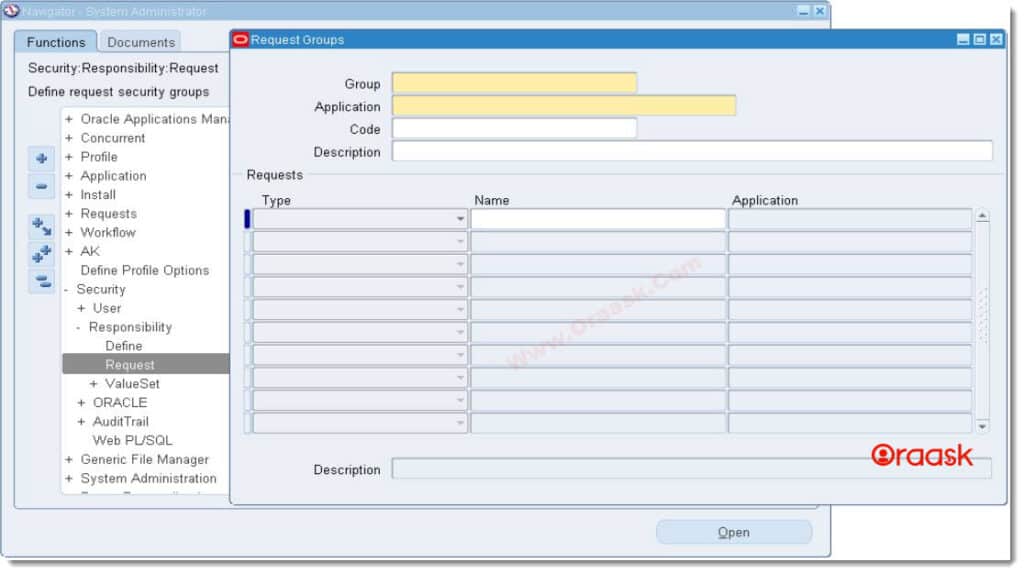
[adinserter block=”2″]
API Parameters Clarifications:
- group: Name of the request group.
- application: Name of group’s application (e.g., Application Object Library).
- code: Optional request group code.
- description: Optional description of the request group.
[adinserter block=”3″]
API Code Example
------------------------------------------
-- Description: API to create request group in oracle EBS R12
-- Created By: Hassan @ Oraask.com
-- Creation Date: 27-OCT-2022
------------------------------------------
DECLARE
L_REQUEST_GROUP VARCHAR2 (32767);
L_APPLICATION VARCHAR2 (32767);
L_CODE VARCHAR2 (32767);
L_DESCRIPTION VARCHAR2 (32767);
L_REQUEST_GROUP_ID NUMBER;
L_REQUEST_GROUP_CNT NUMBER;
L_ERROR_MSG VARCHAR2 (4000);
BEGIN
DBMS_OUTPUT.PUT_LINE ('********************************');
L_REQUEST_GROUP := 'Oraask All Reports';
L_APPLICATION := 'Application Object Library';
L_CODE := 'OSK_ALL_REPORTS';
L_DESCRIPTION := 'Oraask Reports';
BEGIN
SELECT COUNT (*)
INTO L_REQUEST_GROUP_CNT
FROM FND_REQUEST_GROUPS
WHERE REQUEST_GROUP_NAME = L_REQUEST_GROUP;
END;
IF (L_REQUEST_GROUP_CNT > 0) THEN
FND_MESSAGE.SET_NAME ('FND', 'FND_GENERIC_MESSAGE');
FND_MESSAGE.SET_TOKEN ('MESSAGE', ' SEQ: 01' || ' - Request Group Already Exists');
L_ERROR_MSG := SUBSTR (FND_MESSAGE.GET, 1, 4000);
RAISE FND_API.G_EXC_ERROR;
END IF;
FND_PROGRAM.REQUEST_GROUP (REQUEST_GROUP => L_REQUEST_GROUP
,APPLICATION => L_APPLICATION
,CODE => L_CODE
,DESCRIPTION => L_DESCRIPTION);
BEGIN
SELECT REQUEST_GROUP_ID
INTO L_REQUEST_GROUP_ID
FROM FND_REQUEST_GROUPS
WHERE REQUEST_GROUP_NAME = L_REQUEST_GROUP;
IF (L_REQUEST_GROUP_ID IS NOT NULL) THEN
COMMIT;
DBMS_OUTPUT.PUT_LINE ('Request Group Created Successfully');
DBMS_OUTPUT.PUT_LINE ('L_REQUEST_GROUP_ID = ' || L_REQUEST_GROUP_ID);
END IF;
EXCEPTION
WHEN NO_DATA_FOUND THEN
FND_MESSAGE.SET_NAME ('FND', 'FND_GENERIC_MESSAGE');
FND_MESSAGE.SET_TOKEN ('MESSAGE', ' SEQ: 02' || ' - Cannot Create Request Group: ' || SQLERRM);
L_ERROR_MSG := SUBSTR (FND_MESSAGE.GET, 1, 4000);
RAISE FND_API.G_EXC_ERROR;
END;
DBMS_OUTPUT.PUT_LINE ('********************************');
EXCEPTION
WHEN FND_API.G_EXC_ERROR THEN
DBMS_OUTPUT.PUT_LINE (L_ERROR_MSG);
DBMS_OUTPUT.PUT_LINE ('********************************');
ROLLBACK;
WHEN OTHERS THEN
DBMS_OUTPUT.PUT_LINE ('Create Request Group Failed with Error: ' || SQLERRM);
DBMS_OUTPUT.PUT_LINE ('********************************');
ROLLBACK;
END;Explanation:
- Firstly, We assigned the required values to our local variable
- Then, we get the count of the current request group name we will create to check if it already exists or not. If it already exists, we raise an exception and print the error message
- The next step is to call the standard API to create the request group.
- We then get the new request group id recently created by the standard API.
- If the above query returns the new request id, it means the request group has been created, so commit the transaction and print the success message to the dbms output to reflect on the application.
- In case the above query returns no record, that means the request group is not created, then raise an exception and print the error message.
[adinserter block=”4″]
Output
Request Group Created Successfully
L_REQUEST_GROUP_ID = 1001807
[adinserter block=”5″]
Final Result
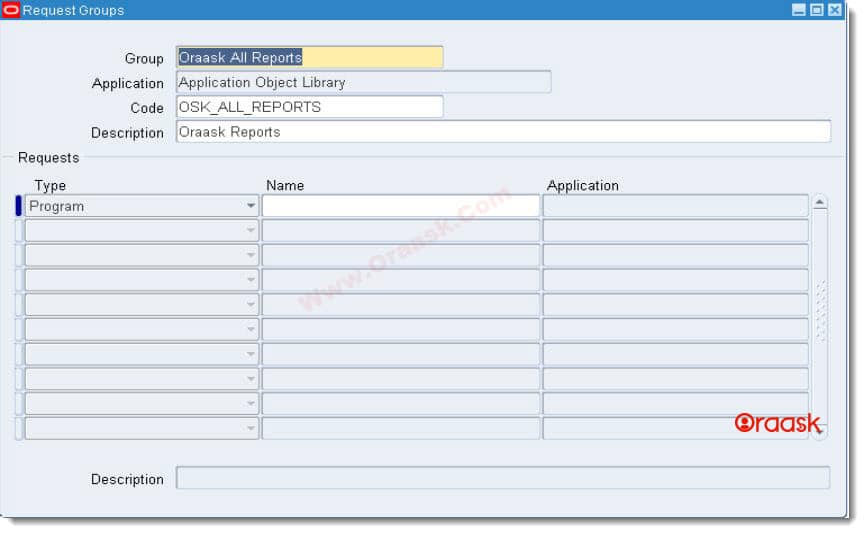
[adinserter block=”6″]
Conclusion
This article gives an example of creating a request group in Oracle EBS using API from the backend.
Please don’t use this code directly on production environment, instead test it on test environment first to make sure that API working correctly as per your requirements.
Hopefully, it was clear and concise. Share to Spread Knowledge.
